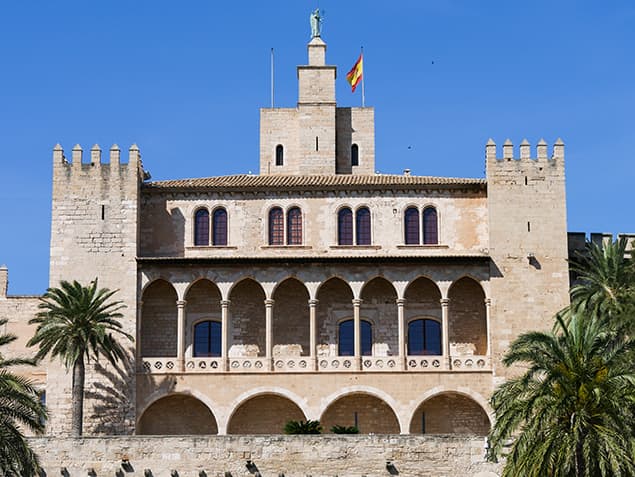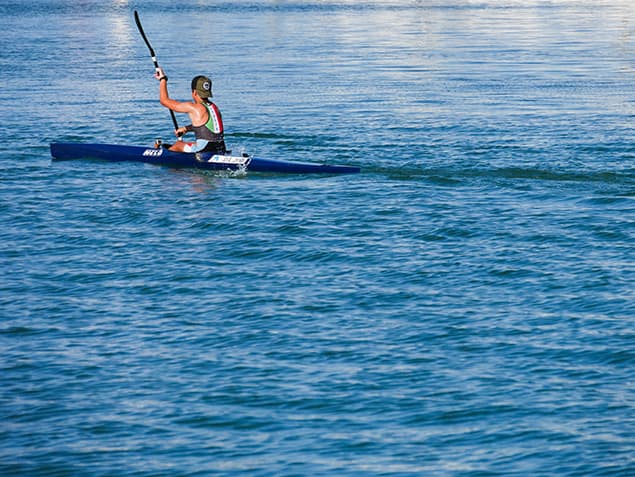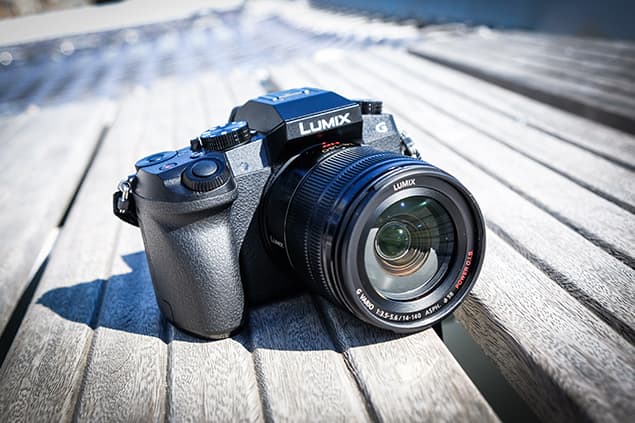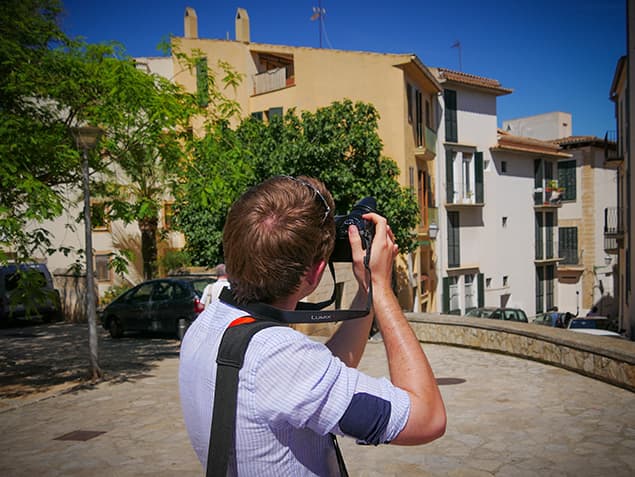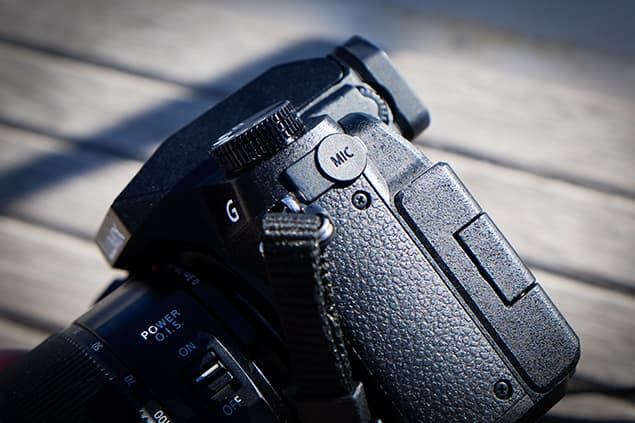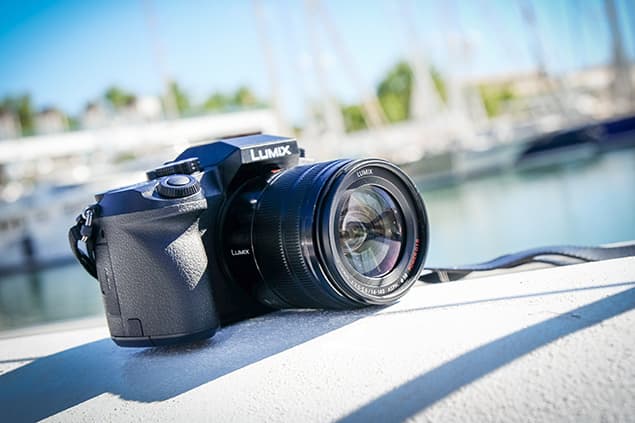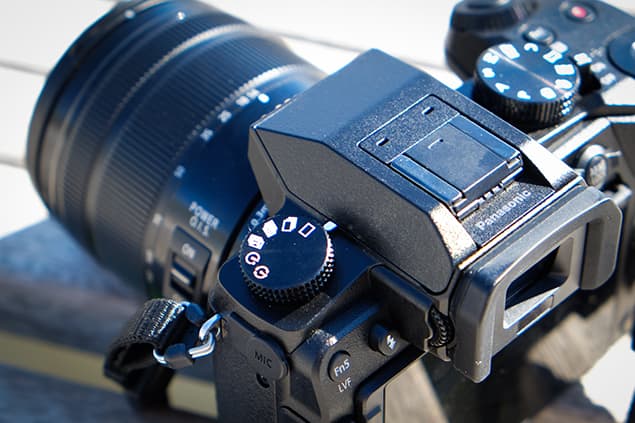https://link.brightcove.com/services/player/?bctid=4246714800001
At a glance
- 16-million-pixel Live MOS sensor
- Venus Engine Image Processor
- 2.36-million-dot OLED viewfinder
- ISO 100-25,600
- Depth from Defocus autofocus technology
- 8fps continuous shooting (AFS)
For those after a conveniently sized, feature-packed compact system camera boasting all the bells and whistles at an affordable price, there’s never been a better selection of models to choose from.
We’ve seen Olympus tap into this sector with the small and beautifully designed E-M10, Sony has the powerful A6000, and Fujifilm has just taken wraps off the brand-new X-T10.
Not one for resting on their laurels, Panasonic has also stepped up to the competition and has made a bold statement by unveiling their latest mid-range CSC – the Lumix G7.
Arriving on the back of the popular and successful Lumix G6 that was launched just over two years ago, has the Lumix G7 got what it takes to to tempt enthusiasts away from the attractive alternatives currently on the market?
Here we take a closer at the Panasonic Lumix G7’s key features and bring you our first impressions of the camera, from the official launch in Palma de Mallorca, in our first look Panasonic Lumix DMC-G7 review.
Features
With this new release, Panasonic seems to be placing the emphasis very much on video and just like the Lumix GH4, the Lumix G7 is capable of 4K video capture, recording QFHD 4K video in 3840×2160 at 25p (50Hz) or 24p in MP4 in addition to full-HD 1,920 x 1,080 at 50p (50 Hz) videos in AVCHD Progressive or MP4 (MPEG-4 / H.264) format with practical full-time AF.
More than just a video mode, the Lumix G7’s 4K video functionality brings a lot to stills photographers by allowing 8-million-pixel images to be extracted directly from a movie clip. To help with this, three 4K photo functions have been introduced to make the process even easier; 4K burst shooting, 4K Burst (Start/Stop) and 4K Pre-burst.

It’s possible to extract 8-million-pixel still images directly from 4K video. This image was one of the first we captured using the G7’s standard 4K Burst Shooting Mode.
To see more images taken with the Panasonic Lumix DMC-G7 have a look at our sample image gallery
Whereas 4K Burst Shooting allows up to 29mins 59secs of continuous shooting at 30fps, which can be used just like a photo burst shoot mode by holding the shutter down, 4K burst (Start/Stop) mode starts consecutive shooting with a single press of a shutter button and stops with the second press – better suited to shooting opportunities that require a longer waiting time.
Not forgetting the 4K pre-burst option, this is aimed at those who’d like the camera to automatically record 30 frames the second before and after the shutter is pressed.
Both the 4K Burst Shooting and 4K Burst (Start/Stop) modes allow you to capture almost 30 minutes of footage at one time, giving you tens of thousands of image possibilities in a range of different image ratios: 3840×2160 (16:9), 3328×2496 (4:3), 3504×2336 (3:2), 2880×2880 (1:1).

Extracting a still image from 4K couldn’t be easier – you simply shoot in 4K and hit the Menu/Set button in playback mode.
4K Video functionality aside, the Lumix G7 features a 16-million-pixel Live MOS sensor that’s designed to run in tandem with Panasonic’s Venus engine image processor. This combination enables the camera to shoot continuously at up to 8fps (AFS) – a 1fps improvement over its predecessor, the Lumix G6 that could shoot full resolution images at up to 7fps. Setting the Lumix G7 to autofocus continuous (AFC) however sees the frame rate drop to 6fps.
The G7 provides a wide ISO range of 100-25,600 and the refined Multi-process Noise Reduction (NR) system is claimed to apply more effective noise reduction and detail processing based on the environment and conditions at the time an image is taken.
In addition, and to further improve the G7’s performance at high ISO, a newly added random filter granulates chromatic noise, blending it into the image to replicate more natural shots. As well as being able to take direct control of ISO straight from the dpad, the button that’s found within the rear command dial can be used as a shortcut to adjust the sensitivity.
As with every Lumix G camera we’ve seen of late, the Lumix G7 is capable of a digital signal communication of up to 240fps and the contrast-detect system has been further enhanced by integrating Panasonic’s new Depth From Defocus technology, abbreviated to as DFD.
This intuitive autofocus technology is designed to calculate the distance to the subject by evaluating two images with different sharpness levels all in a split second whilst at the same time analysing the surroundings in the composition. In terms of focus acquisition speed, the Lumix G7 can lock on to subjects in a rapid 0.07secs – not quite as fast as the claimed 0.06sec from the recently launched Fujifilm X-T10, but still rapid nevertheless.
Turning towards the rear of the camera, the Lumix G7 inherits the excellent OLED electronic viewfinder from the Lumix GH4. The resolution has increased to 2,360k-dots making it far superior to the 1.44k-dot electronic viewfinder as previously found on the Lumix G6.
It has a newly designed eyecup too that’s intended to improve visibility when the camera’s raised to the eye. Just below the EVF lies a 3-inch, 1040k-dot free-angle touchscreen that ties in nicely with the G7’s autofocus system, allowing you to pinpoint your desired area of focus by touch.
Whereas there was previously one command dial at the rear on the Lumix G6, the Lumix G7 features a pair of command dials to take independent control of aperture and shutter speed – a feature we’re seeing more and more of on cameras of the G7’s pedigree.
The top plate also plays homage to two dials. The mode dial is positioned on the right and a drive mode dial features on the left, offering direct access to continuous shooting, self timer and 4K movie recording.
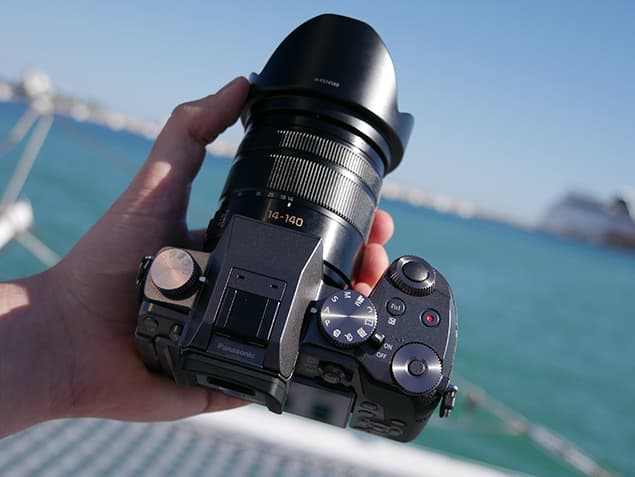
A view of the Lumix G7’s top plate clearly revealing the mode dial on the right and drive mode dial to the left.
As we’ve come to expect on Panasonic G-series cameras, built-in Wi-fi is present and other noteworthy features include a maximum shutter speed of 16,000th of a second, there’s a 3.5mm microphone port at the side and focus peaking. The Lumix G7’s Multiple Panorama Mode also provides a standard (image quality priority) mode (8176x1920pixels) and a wide (angle of view priority) mode (8176x960pixels). The panoramic image below is an example taken with the latter.

A panoramic image of Palma de Mallorca taken using the Lumix G7’s wide angle of view priority Panorama mode
A silent shooting mode, level gauge, time lapse shot mode also feature and as well as being made available in black, the G7 be available to buy in a black and silver finish, though this version is set to be exclusively sold through Jessops.
Pricing and Availability
The Panasonic Lumix G7 will be available to pre-order straight away from most retailers and is expected to arrive in the UK from mid June. Body only, the G7 will cost £599 and two lens bundles will also be available – the DMC-G7KEB-K kit (including 14-42mm lens) costing £679 and the DMC-G7HEB-K kit (including 14-140mm lens) costing £849.
First Impressions
Panasonic’s designers have clearly gone back to the drawing board to create the Lumix G7 and unlike the Lumix G6 that had flowing lines and rounded edges, the Lumix G7 has a more angular design. The redesigned shape of the pentaprism resembles Olympus’s OM-D models, but when it’s positioned alongside rival CSC’s such as the OM-D E-M10 and Fujifilm X-T10 you value the G7’s deeper handgrip, which offers more to wrap your hand around to get a solid grasp.
The top plate offers excellent manual control thanks to the addition of the drive mode dial and the dual command dials are well placed, however they are rather plasticky and don’t offer a huge amount of resistance to prevent them being knocked.
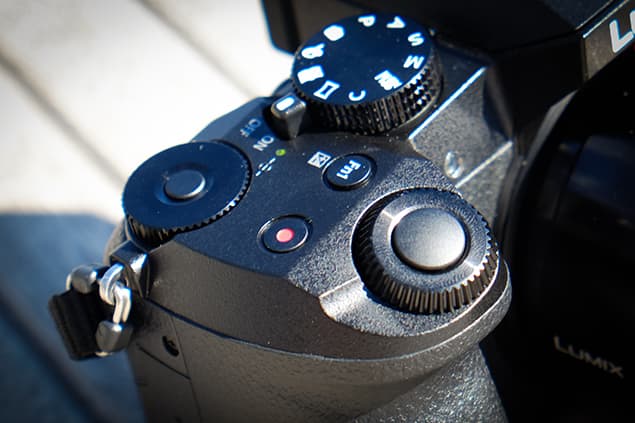
The Lumix G7’s command dials are rather plasticky and don’t offer a great deal of resistance when they’re turned
The touchscreen is incredibly responsive and offers a great way to intuitively navigate through menus, refine the position of the AF point and scrub through 4K movie clips frame by frame. The clever 4K pre-burst option worked well for capturing spur of the moment action before there’s time to fire the shutter, however the way the camera continuously records in this mode means it quickly drains the battery and should be used sparingly. I found the 4K burst shooting mode the best of the three 4K modes and the process of extracting an 8-million-pixel still image couldn’t be easier – simply hit the Menu/Set button and the image is saved to the card. As we expect of Panasonic CSC’s, the G7’s autofocus speed is lightening fast and locks onto subjects with no fuss.
With fierce competition in the CSC market of late, Panasonic looks to be targeting more experienced enthusiasts with the G7 and those who may have already bought into the Lumix system. Though the G7 doesn’t feature weather sealing or the same build quality as the the Lumix GH4, it offers an impressive set of features that’ll certainly appeal. At the time of writing, the G7 costs £100 more than the Fujifilm X-T10 and £200 more than the Olympus OM-D E-M10 when their body only prices are compared.
Sample Images
The sample images below were taken using a pre-production sample of the Panasonic Lumix G7.


